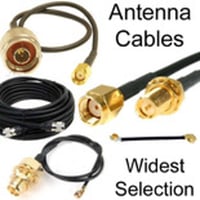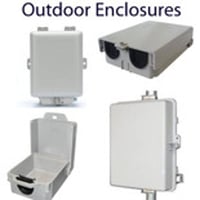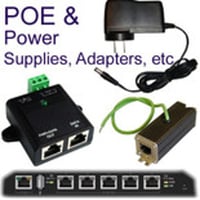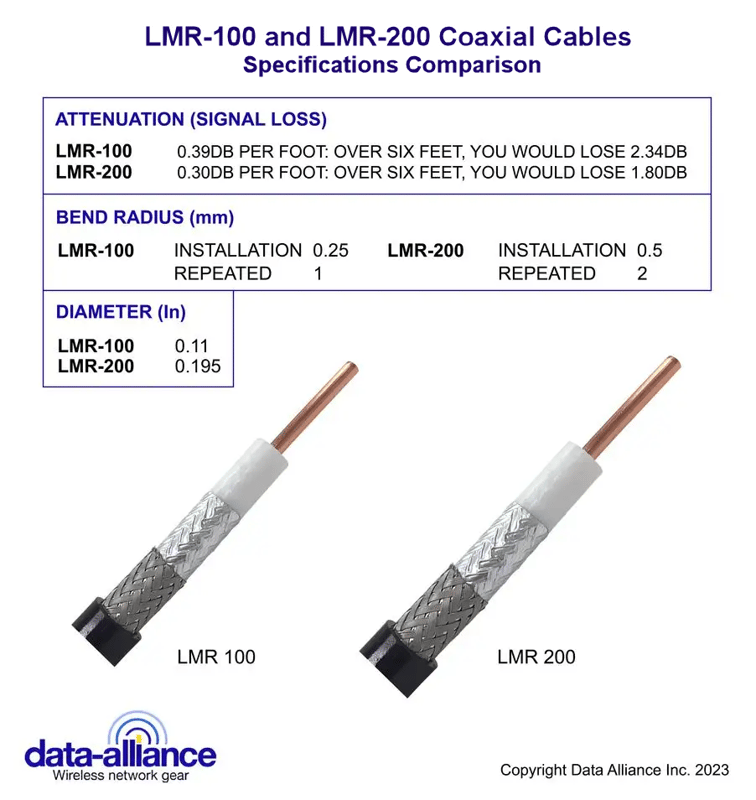FME Cables & Adapters
Cables and adapters with FME connectors, for all wireless applications
FME cables & adapters are coaxial antenna cables, or adapters for coaxial antenna cables, that have at least one FME connector. This short article covers the characteristics of the FME connector and the types of FME cables, adapters and their applications.
The FME connector
FME stands for For Mobile Equipment which is a type of miniature radio frequency connector that was developed for use in applications where there is mobility. FME connectors are engineered to maintain a competent connection that is unaffected by outdoor environments, shock, mechanical jolts, and vibration of moving vehicles and other mobile structures.
Physical specifications of the FME connector
FME connectors are also called SAP connectors or nipple connectors due to their compact appearance which makes them advantageous for routing smaller diameter flexible coax cables Here are the key physical characteristics of the FME connector:
- Description: compact, low-diameter threaded connectors
- Material: machined brass with nickel or gold plating
- Threads: 8mm (M8) by 0.75 mm pitch.
- Male FME connector: The male FME connector has a diameter of just over 9mm (0.35 inches) with flats on its body to aid in tightening the mated connection. The threads on the male FME connector are internal. The male FME connector carries a gold-plated brass pin as its center conductor surrounded by a recessed Delrin plastic or PTFE insulator.
- Female FME connector: Female FME connectors have a diameter of 0.276 inches (7 millimeters). The threading of the female connector is external. The internal conductor is a recessed gold plated, phosphor bronze receptacle. The receptacle is surrounded by a Teflon nipple insulator that protrudes beyond the body of the connector, creating a weatherproof seal on the mated connector.
- Mating: The FME connector is mated by screw coupling and is resilient over at least 500 mating cycles.
Electrical specifications of the FME connector
- Impedance: 50 Ohm impedance connector
- Frequency limit: up to 2000 MHz (2 GHz)
- VSWR: 1.3
- Working voltage: up to 500 volts
FME cable types
FME cables can have FME connectors at both ends or pair an FME connector with a different type of radio frequency connector. FME connectors are attached to the cable by first soldering or crimping on the center conductor and threading on the insulator and body of the connector with soldering or crimping onto the cable. Here are the most common types of FME cable:
Types of FME adapters
FME adapters are radio frequency adapters that can be used to make 50-Ohm impedance connections between FME connectors and RF connectors of a different gender or type. They can be:
In-series FME adapters
- Male to male FME adapters
- Male to female FME adapters
- Female to female FME adapters
Between series FME adapters:
- FME to SMA adapters
- FME to TNC adapters
- FME to N connector adapters
- FME to MCX connector adapters
FME cables applications
The small diameter and flexibility of FME cables lend them to a wide range of applications. Depending on the maximum frequency of the coaxial cable, FME cable assemblies can be used in the majority of conventional radiofrequency circuits including GPS, Amateur Radio, and telecommunications applications. Here are the main applications of FME connectors.
FME to FME and FME to SMA cables are used for GPS and other Global Navigation Satellite Systems (GNSS). FME cables are used to install external GPS antennas and make low attenuation connections to Low Noise Amplifiers (LNAs). The low insertion loss and stable coupling of FME connectors are also advantageous. High-quality low-loss FME cables are needed because of the weakness of the GPS signal. The signal is broadcast from orbiting satellites and is greatly weakened as it passes through the ionosphere. By the time it reaches a receiver it is often significantly faded, hindering GPS devices from acquiring a “fix”.
Cellular Networking
FME cables are used in all five generations of cellular networking technology. It can transmit frequencies used by GSM, CDMA, and LTE. It is a rated alternative to the larger SMA connector as it can be fitted in small crevices. They are used to connect components from:
- base transceiver stations
- the public switching network
- cellular network signal boosters
- outdoor antennas
- indoor data card amplifiers and antennas
Vehicle Automation
The FME connector is used in vehicles as it is resilient against movement, jolts, and vibration and is easily and discretely installed in cars and other vehicles. It is able to support the cellular frequencies used by vehicular automation technologies like Cellular Vehicle 2 Everything (CV2X) and the Intelligent Transport Systems (ITS) infrastructure. Low-loss FME cables are a suitable match for the real-time cellular data transfer between vehicles and the objects in their environment as part of this technologically advanced motoring.
Marine
The water and weather-resistant mated connection of FME cables are advantageous in marine applications. FME cables are installed in yachts and other vessels to deliver wireless connectivity solutions like WiFi alongside routine marine navigation and communication radio technologies. The narrow diameter and flexibility of these cables make them easy to retrofit in boats as they can be routed through paneling and conduits.
Applications of FME Antenna Connectors / Cables and FME antennas
- The FME connector (For Mobile Equipment) is a 50 Ohms miniature RF connector adapted for outstanding performance in condition and transmission of frequencies between 0 and 2GHz frequency range.
- FME connectors are mostly used in cellular communication devices and data applications.
- They are usually found in mobile antenna applications.
- The unique female connector design is convenient for tight fittings: The thin female connector is designed to squeeze into tight places or go through small holes in the equipment or device.
The female connector has a smaller diameter than the male connector. The female has an 8mm by 0.75mm threading pitch onto which the male’s slightly larger diameter casing tightens into. Both connectors are made out of brass and plated with either gold or nickel around the contacts. The connectors allow cable termination through crimping or soldering.








